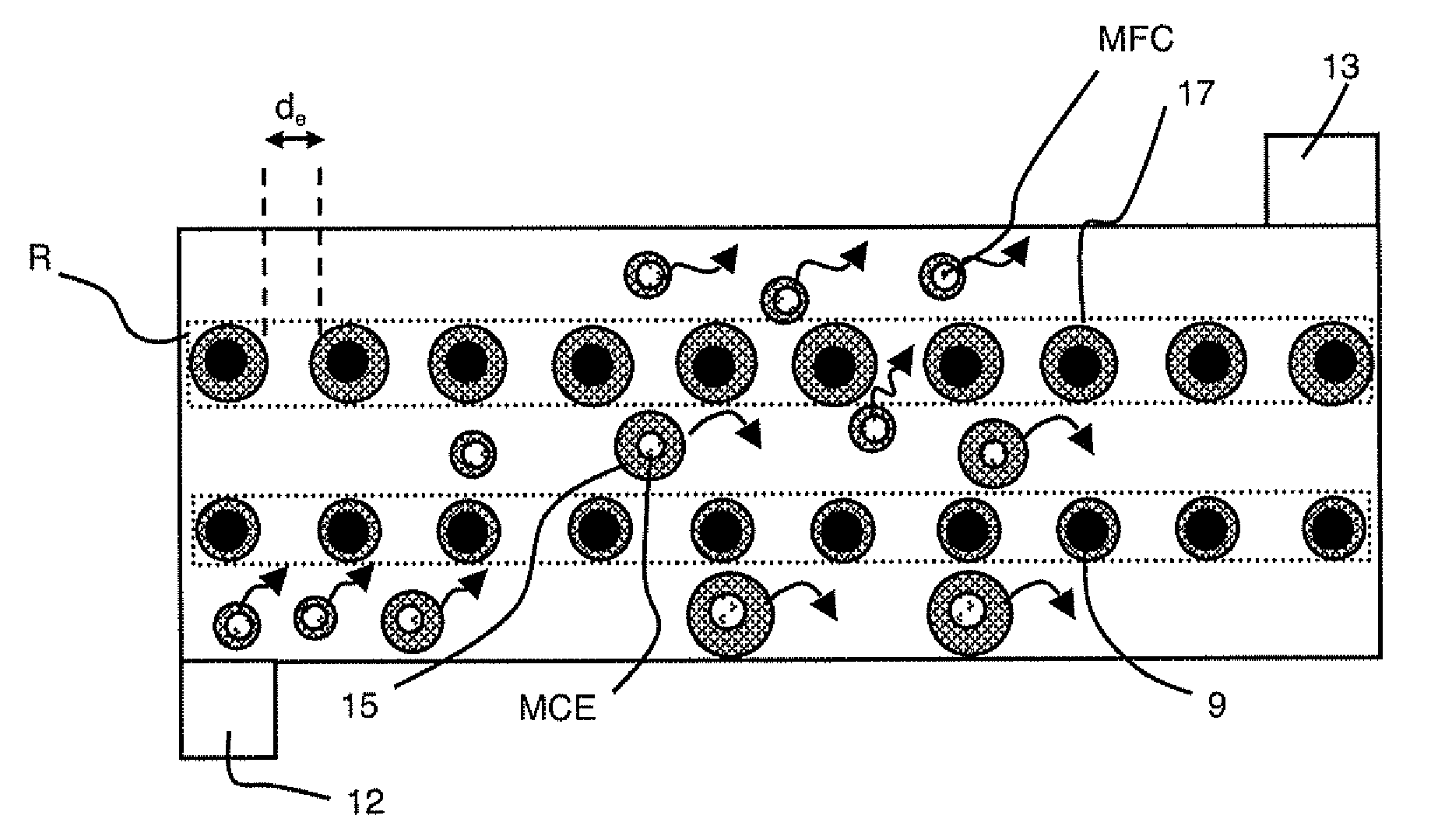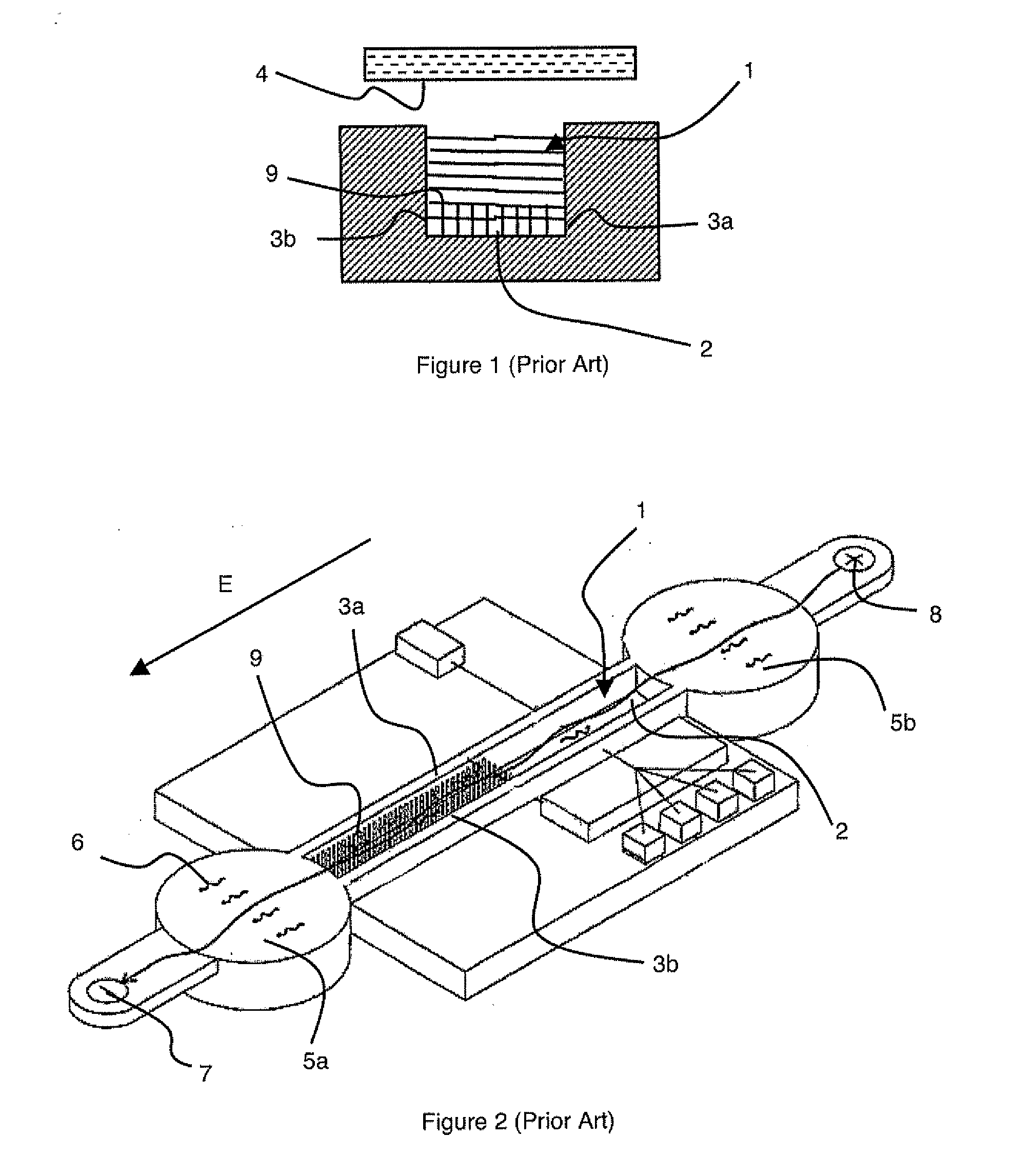Device for separating biomolecules from a fluid
a technology for biomolecules and fluids, applied in the direction of diaphragms, electromechanical devices, water/sludge/sewage treatment, etc., can solve the problems of molecules, difficult cleaning, and difficult industrialization,
- Summary
- Abstract
- Description
- Claims
- Application Information
AI Technical Summary
Benefits of technology
Problems solved by technology
Method used
Image
Examples
Embodiment Construction
[0022]According to a particular embodiment illustrated in FIGS. 3 to 5, the device for separating biomolecules from a fluid comprises a microfluidic component provided with at least one microchannel 1 delineated by a bottom wall 2 and two side walls 3a and 3b facing one another. Microchannel 1 is preferably a closed microchannel (FIG. 4) and is delineated by a top wall 4 which comprises an inlet 12 and an outlet 13 for passage of the fluid.
[0023]The fluid can be made to flow in the separating device by applying for example a pressure difference between inlet 12 and outlet 13 of the device. This pressure difference can for example be applied by using a syringe pusher, a peristaltic pump or any other means known to the person skilled in the art. The microchannel represented in FIGS. 3 to 5 is of straight shape but it may also be in the form of a curve, a spiral, a circle, etc.
[0024]The microfluidic component can thus be produced in a substrate in which the microchannel is burrowed to ...
PUM
| Property | Measurement | Unit |
|---|---|---|
| depth | aaaaa | aaaaa |
| width | aaaaa | aaaaa |
| width | aaaaa | aaaaa |
Abstract
Description
Claims
Application Information
 Login to View More
Login to View More - R&D
- Intellectual Property
- Life Sciences
- Materials
- Tech Scout
- Unparalleled Data Quality
- Higher Quality Content
- 60% Fewer Hallucinations
Browse by: Latest US Patents, China's latest patents, Technical Efficacy Thesaurus, Application Domain, Technology Topic, Popular Technical Reports.
© 2025 PatSnap. All rights reserved.Legal|Privacy policy|Modern Slavery Act Transparency Statement|Sitemap|About US| Contact US: help@patsnap.com



